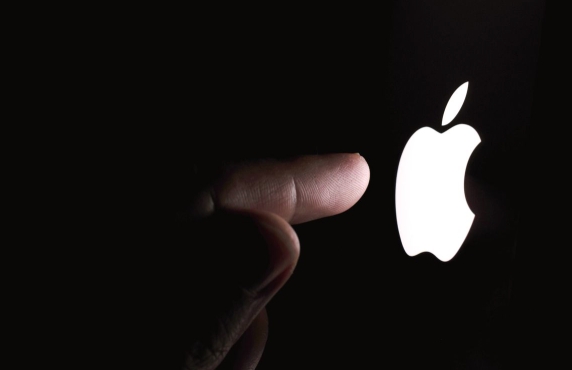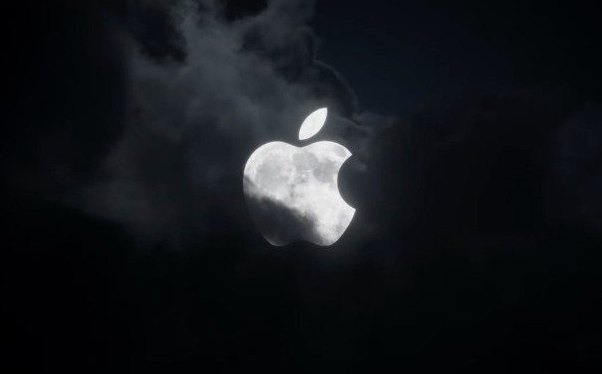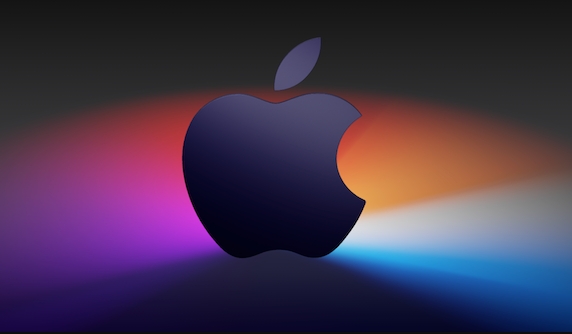How to use Migration Assistant on a Mac?
Use Migration Assistant when setting up a new Mac, replacing an old one, restoring macOS, or migrating from a Time Machine backup or another computer, as it transfers user accounts, apps, settings, and files. 2. To transfer between Macs, ensure both are on the same network or connected via cable, updated to compatible macOS versions, and powered; open Migration Assistant on the old Mac, select "To another Mac," and follow setup prompts on the new Mac by selecting the old Mac and entering the 12-digit code. 3. For Time Machine backups, connect the drive, choose "From a Time Machine backup," select the backup and migration point, then choose which data to transfer. 4. After connection, select what to transfer—user accounts, apps, shared files, and settings—with duplicate apps not reinstalled unless different versions, and allow time for completion based on data size and connection speed. 5. Do not interrupt the process, ensure sufficient storage on the new Mac, log in to accounts and reauthorize software post-migration, manually erase the old Mac if disposing of it, and note that some third-party apps, iOS backups, and system settings may not transfer perfectly, requiring manual checks and adjustments afterward.

Using Migration Assistant on a Mac is a straightforward way to transfer your personal data, apps, and settings from one Mac to another—or from a backup—when setting up a new machine. Here’s how to use it effectively.

When to Use Migration Assistant
Migration Assistant is most useful when:
- Setting up a new Mac for the first time
- Replacing an old Mac with a newer model
- Restoring data after reinstalling macOS
- Migrating from a Time Machine backup or another computer
It can transfer your user accounts, applications, system settings, and files—saving you time from manually reinstalling and configuring everything.

Step-by-Step: How to Use Migration Assistant
1. Prepare Both Macs (If Transferring from Another Mac)
If you're moving data from an old Mac to a new one:
- Make sure both Macs are connected to the same Wi-Fi network, or connect them via a Thunderbolt cable, Ethernet cable, or USB-C cable.
- Update both Macs to a compatible version of macOS. Migration Assistant works best when both systems are on similar or recent OS versions.
- Charge both Macs or plug them into power.
On the old Mac, open Migration Assistant:

- Go to Applications > Utilities > Migration Assistant.
- Click Continue, then enter your administrator password if prompted.
- Select To another Mac and click Continue. The old Mac will now wait for the new one to connect.
On the new Mac, during setup:
- When you reach the "Transfer Information to This Mac" screen, select From a Mac, Time Machine backup, or startup disk and click Continue.
- Follow the prompts and look for your old Mac in the list. Select it and click Continue.
- Enter the 12-digit code shown on the old Mac into the new one to establish a secure connection.
Alternatively, if the new Mac is already set up:
- Open Migration Assistant from Applications > Utilities.
- Choose From a Mac, Time Machine backup, or startup disk and follow the same pairing steps.
2. Migrating from a Time Machine Backup
If you're using a Time Machine drive:
- Connect the backup drive to the new Mac.
- During setup (or in Migration Assistant), choose From a Time Machine backup or other disk.
- Select the backup you want to use and choose a migration point (latest or a specific date).
- Pick the user accounts, apps, and settings you want to transfer.
3. Select What to Transfer
After the Macs or backup are connected, you’ll be prompted to choose what to transfer:
- User accounts
- Applications
- Shared files
- Computer settings (like network and printer settings)
You can select all or just specific items. Note: Apps already on the new Mac won’t be duplicated unless they’re different versions.
Wait for the transfer to complete. The time depends on the amount of data and connection type (wired is faster than wireless).
Tips and Things to Keep in Mind
- Don’t interrupt the process: Once started, avoid shutting down either Mac or disconnecting cables.
- Free up space: Ensure the new Mac has enough storage for the incoming data.
- Post-migration steps: After migration, log in to your accounts (iCloud, App Store, etc.), reauthorize software (like iTunes or Adobe apps), and check that all apps work as expected.
- Old Mac data: Migration Assistant copies data—it doesn’t delete it. You’ll need to manually erase your old Mac if you plan to sell or give it away.
What Not to Expect
- Migration Assistant does not transfer everything from some third-party apps (especially those with their own cloud sync).
- Some system settings might not carry over perfectly, especially across major macOS version differences.
- iOS backups (the ones in Finder) are transferred, but you may need to re-sync devices.
Basically, Migration Assistant handles the heavy lifting, but a quick check afterward ensures everything moved smoothly.
The above is the detailed content of How to use Migration Assistant on a Mac?. For more information, please follow other related articles on the PHP Chinese website!

Hot AI Tools

Undress AI Tool
Undress images for free

Undresser.AI Undress
AI-powered app for creating realistic nude photos

AI Clothes Remover
Online AI tool for removing clothes from photos.

Clothoff.io
AI clothes remover

Video Face Swap
Swap faces in any video effortlessly with our completely free AI face swap tool!

Hot Article

Hot Tools

Notepad++7.3.1
Easy-to-use and free code editor

SublimeText3 Chinese version
Chinese version, very easy to use

Zend Studio 13.0.1
Powerful PHP integrated development environment

Dreamweaver CS6
Visual web development tools

SublimeText3 Mac version
God-level code editing software (SublimeText3)
 what is a kernel panic on Mac
Jul 31, 2025 pm 12:03 PM
what is a kernel panic on Mac
Jul 31, 2025 pm 12:03 PM
Kernel crashes are system crashes that occur when the Mac operating system encounters a serious error that cannot be recovered, usually caused by software or hardware problems. Common reasons include: 1. Flawed driver or kernel extension; 2. Hardware problems such as memory or storage failures; 3. Software conflicts; 4. Corrupted system files; 5. Peripheral triggers. It can be identified by white-word prompts on black or gray screens and "kernelpanic" records in the system log. Solutions include: 1. Disconnect all peripherals and restart; 2. View the crash log through the console application; 3. Enter safe mode to boot; 4. Reinstall macOS; 5. Run Apple diagnostic tools. Occasional occurrence may be accidental, but frequent occurrences require troubleshooting of software and hardware problems.
 How to set up email on a Mac?
Aug 04, 2025 am 07:48 AM
How to set up email on a Mac?
Aug 04, 2025 am 07:48 AM
OpentheMailappandclickAddAccount,thenenteryourname,email,andpassword.2.Selectyouremailprovider—iCloud,Gmail,Yahoo,orOutlook.comwillauto-configureusingOAuth.3.Forunsupportedproviders,choosemanualsetupandenterIMAP/SMTPserverdetailsincludinghostnames,po
 How to change sound output on Mac
Jul 28, 2025 am 01:30 AM
How to change sound output on Mac
Jul 28, 2025 am 01:30 AM
Clickthesoundiconinthemenubartoquicklyselectanavailableoutputdevice.2.GotoSystemSettings>Sound>Outputfordetailedcontrolovervolume,balance,andaudioformat.3.UsetheOptionkeywiththesoundiconortheAirPlayicontostreamaudiotoAirPlay-compatibledevices.4
 How to change mouse or trackpad scrolling direction on a Mac?
Aug 04, 2025 am 06:39 AM
How to change mouse or trackpad scrolling direction on a Mac?
Aug 04, 2025 am 06:39 AM
TochangethescrollingdirectiononaMac,openSystemSettings(orSystemPreferencesonolderversions)fromtheApplemenu.NavigatetoTrackpadorMouseinthesidebar(Venturaandlater)ordirectlyinSystemPreferences(olderversions).IntheScroll&Zoom(Trackpad)orPoint&Cl
 How to disable Siri on Mac
Jul 30, 2025 am 04:58 AM
How to disable Siri on Mac
Jul 30, 2025 am 04:58 AM
TodisableSirionyourMac,gotoSystemSettingsfromtheApplemenu,clickSiri,andtogglethemainSiriswitchoff.2.TostopSirisuggestionsanddatasharing,gotoSystemSettings>Siriandturnoffoptionslike“Listenfor‘HeySiri’”,“AllowSiriwhenlocked”,and“ImproveSiri&Dict
 How to install Windows on a Mac without Boot Camp
Jul 31, 2025 am 11:58 AM
How to install Windows on a Mac without Boot Camp
Jul 31, 2025 am 11:58 AM
Without BootCamp, installing Windows on Mac is feasible and works for different chips and needs. 1. First check compatibility: The M1/M2 chip Mac cannot use BootCamp, it is recommended to use virtualization tools; the Intel chip Mac can manually create a boot USB disk and install it in partition. 2. Recommended to use virtual machines (VMs) for M1 and above chip users: Windows ISO files, virtualization software (such as ParallelsDesktop or UTM), at least 64GB of free space, and reasonably allocate resources. 3. IntelMac users can manually install it by booting the USB drive: USB drive, WindowsISO, DiskU is required
 How to install Windows on a Mac
Jul 31, 2025 am 10:07 AM
How to install Windows on a Mac
Jul 31, 2025 am 10:07 AM
ForIntel-basedMacs,useBootCampAssistanttocreateadual-bootsystemwithWindowsbypreparingaUSBdrive,downloadingaWindowsISO,partitioningthedisk,andinstallingWindowsalongsidemacOSwithsupportdrivers.2.ForAppleSiliconMacs(M1/M2/M3),usevirtualizationsoftwareli
 Setting Up MongoDB on a Mac
Aug 01, 2025 am 03:41 AM
Setting Up MongoDB on a Mac
Aug 01, 2025 am 03:41 AM
InstallHomebrewifnotalreadyinstalled,thenrunbrewtapmongodb/brewandbrewinstallmongodb-communitytoinstallMongoDB.2.Starttheservicewithbrewservicesstartmongodb-community,whichrunsmongodinthebackgroundandenablesauto-startonboot.3.ConnectusingtheMongoDBsh







